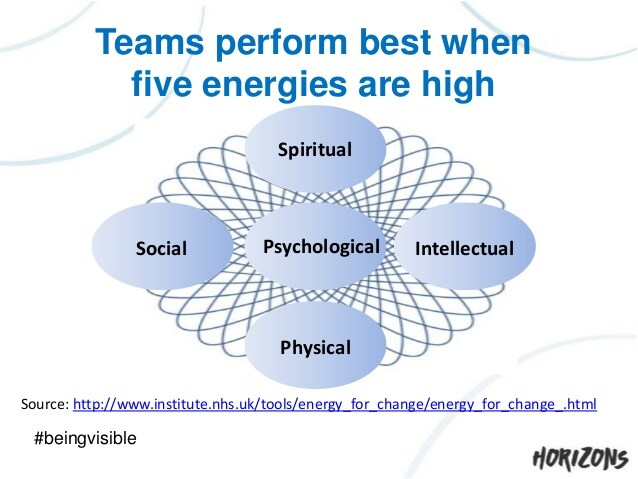

SOURCE: NHS Horizons, NHS England, 2013. Used with permission.
The five energy domains are interrelated. They can support or oppose one another. There are no requirements for the amount of each domain needed to affect change; ebb and flow is normal.
For example, at the beginning of a change initiative, there may be high degrees of psychological and intellectual energies, but a low degree of physical energy amongst change teams, organizations or systems. Individuals may have the courage to make a change and begin to think about and plan for the change initiative; however, there may be little progress at this stage of change.
In settings using social movement actions, the necessary domains of energy include:
- Psychological energy must be strong so that people feel safer to take risks and try new and innovative approaches that may or may not succeed. Psychological energy can be strengthened by increasing the spiritual and social domains of energy.
- Physical energy is needed to help people feel confident in their ability to progress and achieve change, based on previous experiences.
- Social energy must be high to fuel the collaboration needed to mobilize or come together for change.
In contrast, settings using traditional, structured top-down approaches to change tend to have the following levels of energy domains:
- Intellectual energy is high, reflecting change efforts that use logical and rational planning. This keeps leaders in their "comfort zone".
- Physical energy is characterized in terms of the progress made and whether goals were reached.
- Social, spiritual and psychological energy domains are lower; at most, a sense of shared purpose is minimally expressed.
SOURCES: Land et al., 2013; Sustainable Improvement Team and the Horizons Team, 2018.
